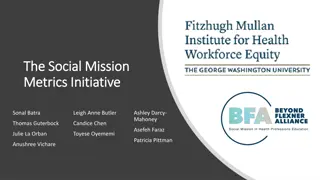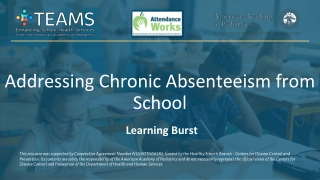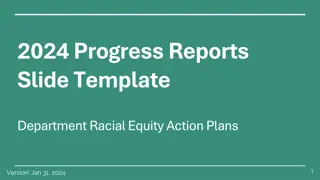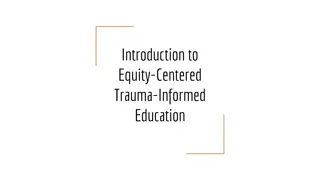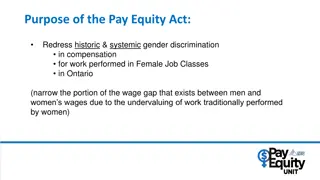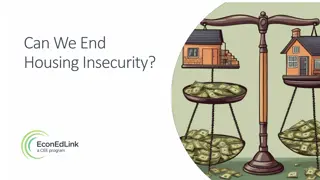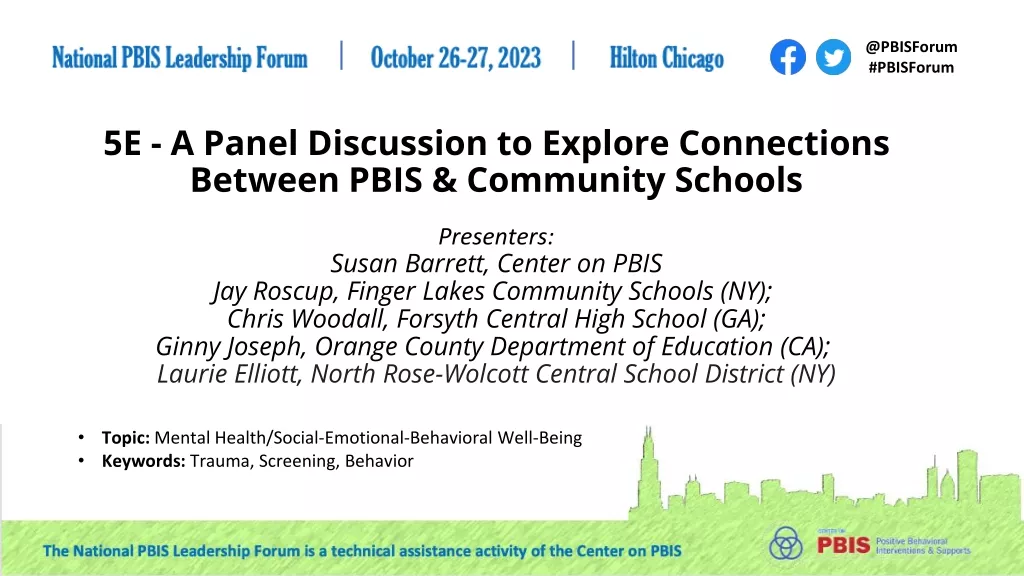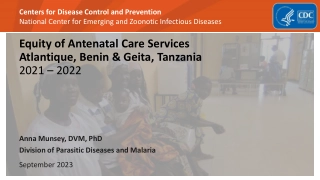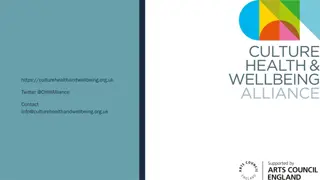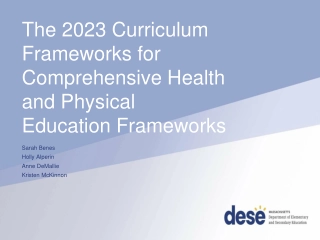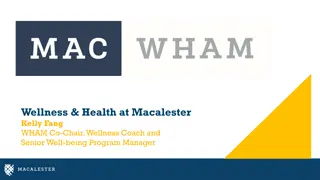Health Equity and Schools
Health disparities and their impact on marginalized students and families in school communities, particularly in relation to COVID-19. Developed with support from the CDC.
Download Presentation
Please find below an Image/Link to download the presentation.
The content on the website is provided AS IS for your information and personal use only. It may not be sold, licensed, or shared on other websites without obtaining consent from the author. Download presentation by click this link. If you encounter any issues during the download, it is possible that the publisher has removed the file from their server.
Presentation Transcript
Health Equity and Schools Learning Burst This resource was developed through the support of the Centers for Disease Control and Prevention (CDC) as part of Award # 6 NU87PS004365, Building Capacity for School Sexual Health Services through Training, Education, Assistance, Mentoring, and Support (TEAMS)-Component 3B. The contents are those of the author(s) and do not necessarily represent the official views of, nor an endorsement, by CDC.
Learning Outcomes By the end of this learning burst, participants will be able to: Identify 2 ways health disparities, health equity, and equality show up in school communities Recognize how COVID-19 and other health conditions disproportionately affect marginalized students and their families
Health Disparities a particular type of health difference that is closely linked with social, economic, and/or environmental disadvantage
Health Disparities Health disparities adversely affect groups of people
Health Disparities Asthma and mental health disparities Highest rates of childhood asthma are among children of color Adolescents of color had the lowest estimates of receipt of mental health services in a specialty setting. 1. Centers for Disease Control and Prevention. (2022, May 25). Most recent national asthma data. Centers for Disease Control and Prevention. Retrieved August 5, 2022, from https://www.cdc.gov/asthma/most_recent_national_asthma_data.htm Adults and adolescents (2015-2019) (Publication No. PEP21-07-01-002). Rockville, MD: Substance Abuse and Mental Health Services Administration. Retrieved from https://www.samhsa.gov/data/ (https://www.samhsa.gov/data/sites/default/files/reports/rpt35324/2021NSDUHMHChartbook102221B.pdf) 2.
Health Disparities Impact of COVID-19 People of color had the highest rates of COVID-19 Children of color had the highest COVID-19 death rates Higher rates of negative effects on mental health were among mothers, Black and Hispanic parents Hispanic parents and families with lower incomes were most likely to report that their child fell behind academically 1. Centers for Disease Control and Prevention. (2022, December 28). Risk for COVID-19 infection, hospitalization, and death by Race/Ethnicity. Centers for Disease Control and Prevention. Retrieved January 12, 2023, from https://www.cdc.gov/coronavirus/2019-ncov/covid-data/investigations-discovery/hospitalization-death-by-race-ethnicity.html Artiga, S., Hill, L., & Ndugga, N. (2021, September 22). Racial disparities in covid-19 impacts and vaccinations for children. KFF. Retrieved January 12, 2023, from https://www.kff.org/racial-equity-and-health- policy/issue-brief/racial-disparities-in-covid-19-impacts-and-vaccinations-for-children/ Lopes, L., Kirzinger, A., Hamel, L., Sparks, G., Kearney, A., Stokes, M., & Brodie, M. (2021, August 19). KFF COVID-19 Vaccine Monitor: The impact of the coronavirus pandemic on the wellbeing of parents and children. KFF. Retrieved January 12, 2023, from https://www.kff.org/coronavirus-covid-19/poll-finding/kff-covid-19-vaccine-monitor-the-impact-of-the-coronavirus-pandemic-on-the-wellbeing-of-parents-and- children/?utm_campaign=KFF-2021-polling surveys&utm_medium=email&_hsmi=150938148&_hsenc=p2ANqtz-8EntTkQp0XKqwzgN0aQ688I25lkKIAUdn__VN5fZ0priap3sWaotfPS24WxMUAoIr1PK7MX9- Hv1ULe6XJlcDEpOZZGg&utm_content=150938148&utm_source=hs_email 2. 3.
Health disparities are inequitable and are directly related to the historical and current unequal distribution of social, political, economic, and environmental resources. We can improve health risks and reduce disparities and inequities by addressing social determinants of health. Source: (Centers For Disease Control and Prevention. Health Disparities. Centers for Disease Control and Prevention, 24 Nov. 2020, www.cdc.gov/healthyyouth/disparities/index.htm.
Social Determinants of Health (SDOH) Definition Social determinants of health (SDOH) are the conditions in the environments where people are born, live, learn, work, play, worship, and age that affect a wide range of health, functioning, and quality-of-life outcomes and risks. Categories Economic stability Education access and quality Health care access and quality Neighborhood and built environment Social and community context Source: Healthy People 2030, U.S. Department of Health and Human Services, Office of Disease Prevention and Health Promotion. Retrieved [date graphic was accessed], from https://health.gov/healthypeople/objectives-and-data/social-determinants-health
Examples of SDOH We May Observe Safe housing, transportation, and neighborhoods Racism, discrimination, and violence Access to nutritious foods and physical activity opportunities Air and water quality Language and literacy skills Education, job opportunities, and income Education is a predictor of health Health affects educational outcomes
Health Equality and Health Equity Health Equity Health Equality Equality means each Health equity means that individual or group of people everyone has a fair and is given the same resources or just opportunity to be as opportunities healthy as possible. 1. MPH@GW, the George Washington University online Master of Public Health program. (2021, December 9). Equity vs. equality: What's the difference? GW Online Public Health. Retrieved August 5, 2022, from https://onlinepublichealth.gwu.edu/resources/equity-vs-equality/ What is health equity? RWJF. (2022, June 16). Retrieved August 5, 2022, from https://www.rwjf.org/en/library/research/2017/05/what-is-health-equity-.html 2.
Understanding Equality vs Equity Health Equity Health Equality Computer labs in lower income neighborhoods have more computers and printers, as well as longer hours of operation, as some students don t have access to computers or internet at home. All public schools in a community have computer labs with the same number of computers and hours of operation during school hours. MPH@GW, the George Washington University online Master of Public Health program. (2021, December 9). Equity vs. equality: What's the difference? GW Online Public Health. Retrieved August 5, 2022, from https://onlinepublichealth.gwu.edu/resources/equity-vs-equality/
The route to achieving equity will not be accomplished through treating everyone equally. It will be achieved by treating everyone justly according to their circumstances. Paula Dressel, Race Matters Institute Racial Equality or Racial Equity? The Difference it Makes, Race Matters Institute. 2014. Accessed Oct. 15, 2020. http://viablefuturescenter.org/racemattersinstitute/2014/04/02/racial- equality-or-racial-equity-the-difference-it-makes/
Recap Social determinants of health impact health outcomes for children and families and can lead to health disparities. There is a bidirectional relationship between education and health.
Recap Continued Policies and practices implemented in schools have the potential to address health disparities. To achieve health equity, the focus should be on making changes to the environment and systems, so that all students have a fair and just opportunity to be healthy.
Examine the community you serve to understand existing health disparities. Consider what social determinants of health have the greatest impact in your community. Use an equity lens to consider potential changes to policies, processes, systems, and environments. Identify ways to begin moving towards a culture of equity.
Resources American Academy of Pediatrics: AAP Policy Statement: Ensuring Culturally Effective Pediatric Care: Implications for Education and Health Policy American Academy of Pediatrics: Words Matter: AAP Guidance on Inclusive, Anti-biased Language Centers for Disease Control and Prevention: Health Equity, Health Disparities Definition and Ways to Promote Equity National Center for School Mental Health: Understanding Social Influencers of Health and Education: A Role for School-Based Health Centers and Comprehensive School Mental Health Systems
Additional Questions Contact Agency Contact Person and Title Contact Email Address Contact Phone Number


